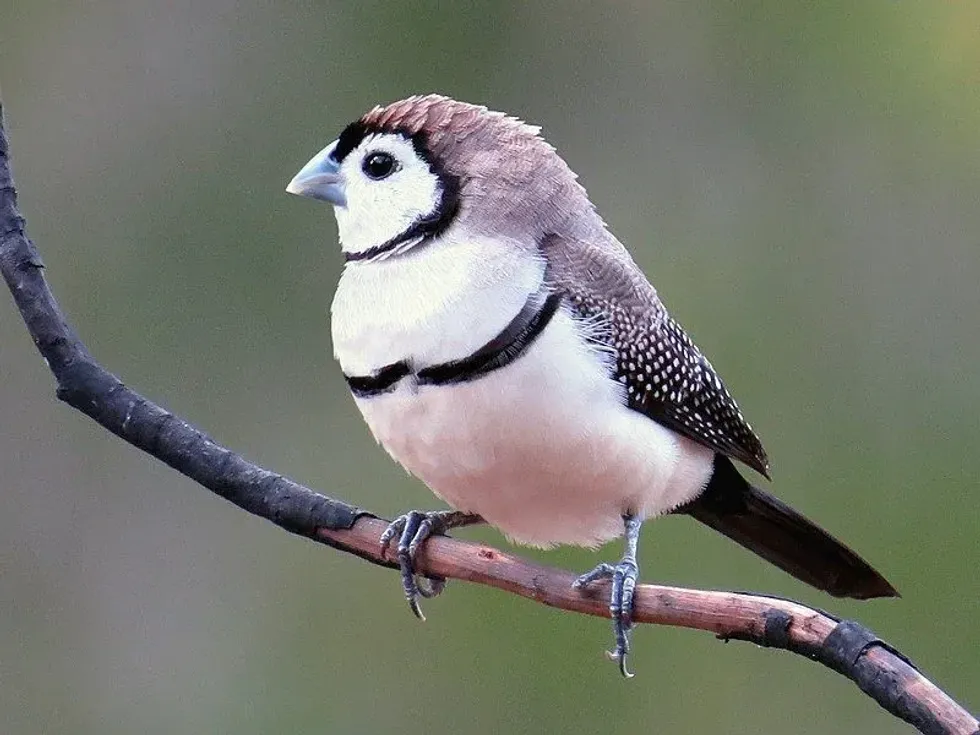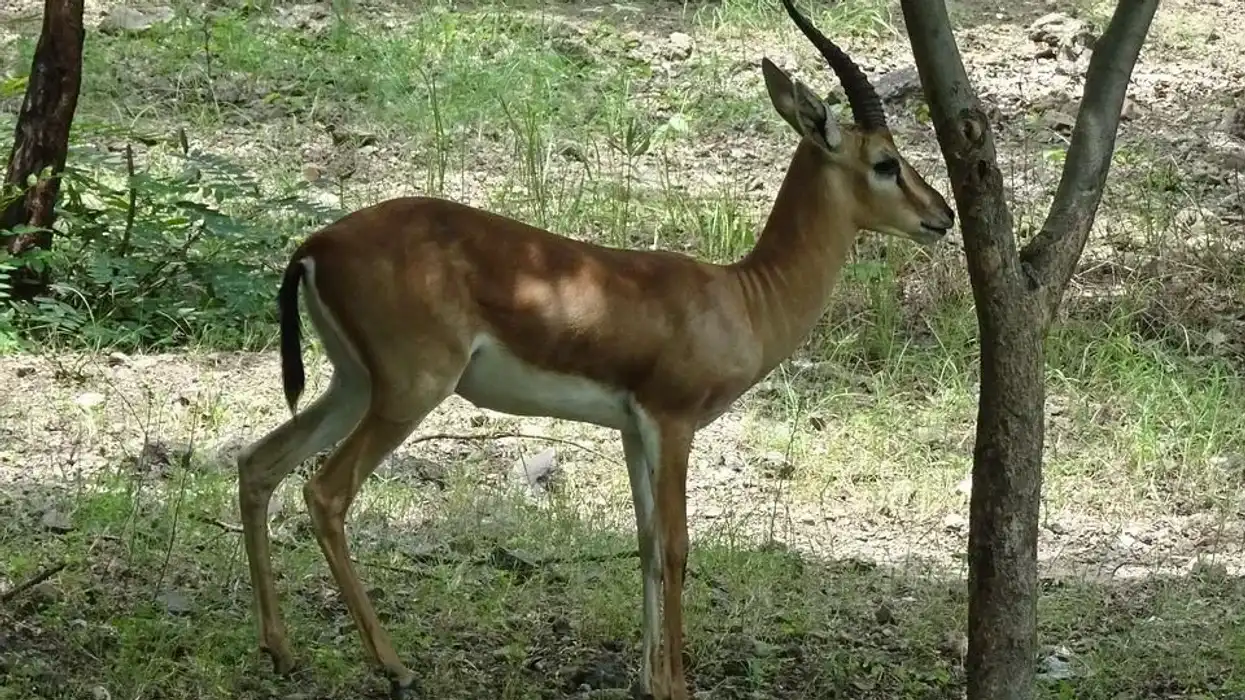The double-barred finch (Taeniopygia bichenovii), also known as the owl finch, is a species of bird that belongs to the family Estrildidae and genus Taeniopygia. These birds are native residents of Australia but their range also covers New South Wales, Cape York, and south-eastern Victoria.
Their established habitat is near watercourses. They can be found living in dry savannahs, open woodlands, shrublands, open forests, and farmlands.
The bird is known to have a seed and grass-based diet but they also consume live food like mealworms, termites, and fly pupa during the breeding season.
The owl finch is a social animal and prefers to live in aviaries with different species of finches. Young finches may breed within six months of being born.
For more relatable content, check out these Egyptian vulture facts and mountain quail facts for kids.
Double-Barred Finch Interesting Facts
What type of animal is a double-barred finch?
The double-barred finch is a species of bird. Its scientific name is Taeniopygia bichenovii. The colorful bird belongs to the family Estrildidae and genus Taeniopygia.
What class of animal does a double-barred finch belong to?
The double-barred finch Taeniopygia are birds that belong to the Aves class of animals. It belongs to the family Estrildidae and genus Taeniopygia.
How many double-barred finches are there in the world?
An accurate estimate of the population of double-barred finches is still unavailable. However, the range of this bird is fairly extensive in nature.
It is native to northern and eastern Australia and Queensland specifically. They also occur in New South Wales, Cape York, and south-eastern Victoria. As the number and range of this species are both on the rise, they are classified as a species of Least Concern in their conservation status.
Where does a double-barred finch live?
The barred finch (Taeniopygia bichenovii )is a common species. Their native land is northern and eastern Australia but their range also covers New South Wales, Cape York, and south-eastern Victoria.
What is a double-barred finch's habitat?
These birds can be typically spotted near water bodies. Their habitat is dry savannahs, open woodlands, shrublands, open forests, grass plains, and farmlands.
Who do double-barred finches live with?
Owl finches are known to nest together and travel in small groups and packs. These birds are not territorial by nature and can co-exist with other finch species in perfect harmony. Their co-inhabitants are namely Gouldians, painted firetails, star finches, cordon bleu, and orange-breasted waxbills.
How long does a double-barred finch live?
Healthy adult owl finches have an expected lifespan of six to seven years. It is, however, worth mentioning that ensuring the long-term health of these tiny birds is a difficult task. A strict regime of parasite control and worming is necessary to guarantee the longevity of this bird.
How do they reproduce?
Adult double-barred finches may breed round the year although spring and fall are considered the ideal seasons for mating and breeding. After mating, the parent birds busy themselves by building nests.
The wild birds construct intricate nest chambers from fine grass for the safe-keeping of their eggs. These round nests have a side entrance and narrow tunnel which leads to the inner chamber of the roost.
These nests are typically constructed 3.2-13.1 ft (1-4 m) from the ground and are kept hidden in bushes, trees, or under eaves. The female bird lays anywhere between six to eight eggs per clutch which is then incubated by both the parent birds for around 14 days.
What is their conservation status?
The conservation status of the double-barred finch is evaluated as Least Concern by the International Union for Conservation of Nature.
Double-Barred Finch Fun Facts
What do double-barred finches look like?
The owl finch has a length of 3-4 in (10-11 cm). This tiny bird has a white face with small dark-brown eyes and a pale bluish beak. It has two defined black bars above and below its white-beige chest.
The presence of bars around the throat and lower breast is what has given the bird its name. The wings are brown with white spots. They have a long black tail and their legs and claws are gray in color.
How cute are they?
The barred finch (Taeniopygia bichenovii) is a treat for the eyes. These tiny, lightweight birds are eye-catching as they sport vivid colors of white, black, and brown. Their small beady and innocent-looking eyes accentuate their cuteness.
How do they communicate?
Owl finches are social by nature. Not only do they maintain close contact among themselves, but they are also known to communicate with other species. These birds can be heard continually vocalizing via chirps and 'toots'. Their cries can be compared to that of a kitten's 'meow'.
How big is a double-barred finch?
The owl finch is rather small in size. They have a length of 3-4 in (10-11 cm) on average. They are bigger than a bee hummingbird which is 2.1-2.4 in (5.5-6.1 cm) in length.
How fast can a double-barred finch fly?
Finches have a flight pattern that can be best described as bouncing and undulating.
How much does a double-barred finch weigh?
The owl finch is a lightweight bird. It weighs around 0.2-0.4 oz (7-12 g).
What are the male and female names of the species?
No specific names have been assigned to the sexes. The male bird is known as a double-barred finch male while the female bird is known as a double-barred finch female.
What would you call a baby double-barred finch?
The young birds have no particular name, they are simply referred to as juvenile double-barred finches.
What do they eat?
Finches have a mixed diet of seeds, leafy greens, and small insects. They primarily survive on seeds but they feast on live food like mealworms, fly pupa, and termites during the breeding season.
Are they dangerous?
Double-barred finches are not dangerous by nature. In fact, they are the ones to be hunted by domestic cats, fox squirrels, snakes, and raccoons.
Would they make a good pet?
Finches are often kept as pets especially in different parts of Australia. This species needs good housing so they are best kept in an aviary that has generous foliage. It is ideal to keep as many as six owl finches in an aviary.
Did you know...
Owl finches are not aggressive by nature. In fact, this cagebird is fairly social and prefers to live in an aviary with other finches.
The birds mainly consume seed and grass but also have to depend on live food like insects and their larvae during breeding for protein.
If male and female finches become parents, it means they will bond for life as these birds are monogamous.
What are the different types of finches?
There are as many as 19 different variations of finches around the world. Each species has its own distinct markings, colorings, and behavioral patterns that make them unique. The most popular finches are the Gouldian finch, the star finch, and the zebra finch.
How do you breed double-barred finches?
Adult finches will breed in captivity if kept in an aviary. These active birds prefer bigger aviaries as it helps them build wicker nests to lay eggs in.
Double-barred finch breeding season is during the warmer months of the year wherein the female finch lays six to eight eggs per clutch. The incubation period is roughly 14 days and both parents take turns sitting on the eggs. Young birds become adults within nine months of being born.
Here at Kidadl, we have carefully created lots of interesting family-friendly animal facts for everyone to discover! Learn more about some other birds from our flamingo facts and birds of paradise facts pages.
You can even occupy yourself at home by coloring in one of our free printable gouldian finch coloring pages.









